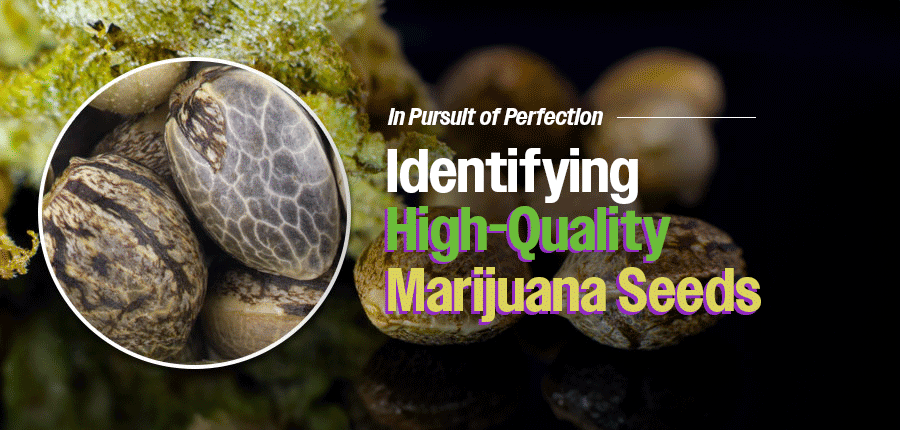In the rapidly expanding field of marijuana cultivation, the utmost importance lies in identifying high quality marijuana seeds. Whether you’re a novice enthusiast or an experienced grower, the key to achieving a thriving and productive cannabis garden is the careful choice of high-quality seeds. By opting for superior genetics, you can support the growth of robust and healthy plants with desirable traits, potency, and an overall high yield. Investing in exceptional seeds establishes the foundation for a gratifying and successful journey into cannabis production.
This blog aims to offer comprehensive guidance on accurately identifying high quality marijuana seeds. We recognize the challenges that arise when sifting through a wide variety of seed options and determining which ones have the potential to develop into exceptional cannabis plants. Shedding light on crucial factors that influence seed quality, acquainting you with precise methods for seed identification, and providing valuable insights on reliable seed suppliers are the main objectives of this blog. By the time you finish reading, you will have acquired the knowledge and resources to make well-informed decisions when selecting marijuana seeds. This will propel you toward a rewarding and fruitful production endeavor.
Circumstances Impacting Seed Superiority
| Factors | Description |
| Seed Viability and Maturity | Seed viability refers to the seed’s ability to germinate and grow into a healthy plant. Fully mature seeds have higher success rates in germination and growth. Obtaining seeds from suppliers prioritizing maturity and proper harvesting practices ensures a better chance of developing strong and productive plants. |
| Appearance of the Seeds | The visual characteristics of the seeds provide insights into their quality and maturity. Consider the following factors:
Seed Color: Mature seeds are typically dark, ranging from brown to black or gray, indicating full maturity. Avoid green or light-colored seeds as they may not be fully developed. Seed Size: Larger seeds generally indicate higher maturity and potential vigor. Look for plump and well-developed seeds. However, remember that seed size alone is not the sole determinant of quality. Seed Texture: High-quality seeds have smooth and firm shells. Avoid cracked, damaged, or brittle shells, which may indicate poor viability or improper handling. The shell should be intact and sturdy, protecting the inner seed. |
| Age and Storage Conditions | The age and storage conditions significantly affect seed viability and germination rates. Consider the following guidelines:
Seed Age: Freshly harvested seeds usually have higher germination rates. Choose recently harvested seeds for better chances of successful germination. Storage Environment: Proper storage in a cool, dark, and dry environment is crucial. Light, heat, and moisture exposure can degrade seeds over time. Use airtight containers and desiccant packs to maintain a stable storage environment. Seed Longevity: Different seeds have varying longevity. Use seeds within one to three years of harvest for optimal results. Depending on the plant species, some seeds may have shorter or longer viability periods. |
Recognizing High-Quality Marijuana Seeds
Visual Evaluation
Seed Color and Patterns: Typically, mature marijuana seeds exhibit darker shades (brown, black, or gray), while lighter or green seeds may indicate immaturity or inferior quality. Unique patterns or markings on the seed surface can signify specific genetic traits.
Consistency in Size and Shape: Look for seeds within a batch that have consistent size and shape. While size alone does not guarantee quality, excessively small or irregularly shaped seeds may have lower viability.
Integrity of Seed Shell: Inspect the seed shell for cracks, dents, or damage. Healthy seeds have intact and undamaged shells, as compromised shells can impact germination and overall quality.
Tactile Examination
Firmness and Hardness: Gently compress seeds between your fingers to assess their firmness and hardness. High-quality seeds should feel firm and resistant to pressure, while soft or easily crumbled seeds may indicate poor viability.
Texture and Smoothness: Run your fingers over the seed’s surface to check for irregularities or rough textures. High-quality seeds typically have a smooth and consistent texture.
Float Test
Procedure and Purpose: Fill a glass with water and place the seeds in it. Observe whether the seeds sink or float. This test helps identify viable seeds with a higher likelihood of successful germination.
Interpretation of Results: Viable seeds generally sink to the bottom, while non-viable or low-quality seeds float or remain suspended. Note that the float test provides a rough indication of seed viability.
Germination Test
Steps to Conduct a Germination Test: Dampen a paper towel or cotton pad without excessive wetness. Place a few seeds on it and fold the towel to cover them. Keep it in a warm, dark location like a sealed plastic bag. Check for germination within a few days to a week.
Evaluation of Germination Rate: Count the number of successfully sprouted seeds after germination. A higher germination rate indicates superior seed quality.
By employing techniques such as visual evaluation, tactile examination, float testing, and germination tests, you can gain valuable insights into the quality and viability of cannabis seeds. These methods collectively offer a comprehensive approach to identifying premium seeds more likely to yield healthy and thriving cannabis plants.

